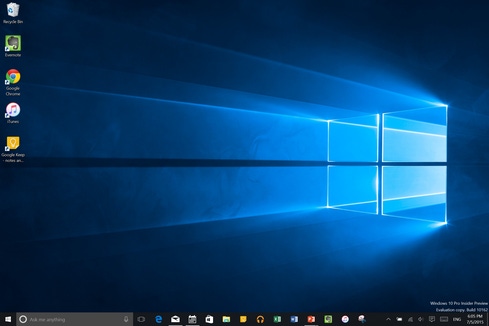Microsoft Opens Windows Bridge For iOS To DevelopersMicrosoft Opens Windows Bridge For iOS To Developers
Microsoft released an early look at its iOS bridge for developers. A final release is scheduled for this fall.


Beyond Windows 10: 6 Microsoft Releases To Watch
Beyond Windows 10: 6 Microsoft Releases To Watch (Click image for larger view and slideshow.)
A little more than a week after Microsoft took the wraps off its latest operating system -- Windows 10 -- the company has released software that could help programmers simplify bridging the gap between Windows applications and apps for Apple's iOS mobile platform.
Windows Bridge for iOS, also referred to as WinObjC, is a Microsoft open source project that provides an Objective-C development environment for Visual Studio and Windows.
In addition, WinObjC provides support for Apple iOS application programming interface (API) compatibility, and is available as a preview on GitHub.
To use WinObjC, there are a few requirements, including the Windows 10 operating system and Visual Studio 2015 with Windows developer tools. The site notes Visual Studio 2015 Community is currently available for free.
The company is releasing the iOS bridge as an open source project under the MIT license, Kevin Gallo, partner director of software engineering at Microsoft, wrote Aug. 6 on Microsoft's Windows blog.
"Given the ambition of the project, making it easy for iOS developers to build and run apps on Windows, it is important to note that today's release is clearly a work-in-progress -- some of the features demonstrated at Build are not yet ready or still in an early state," Gallo noted. "Between now and the fall, we'd love more eyes, feedback, and participation on the code, so we're doing our development in the open."
The iOS bridge supports both Windows 8.1 and Windows 10 apps built for x86 and x64 processor architectures, and soon we will add compiler optimizations and support for ARM, which adds mobile support.
In addition, compiler optimizations will not work and will likely crash clang, while support for Autolayout, Storyboard, MapKit, AssetsLibrary, AddressBook, Ads, Objective-C annotations, and media capture and playback hasn't been worked out yet.
The final release will happen later this fall, allowing the bridge to take advantage of new tooling capabilities that will ship with the upcoming Visual Studio 2015 Update.
For those interested in the deep technical aspects of the bridge, Salmaan Ahmed, the program manager for Windows Bridge for iOS, has an in-depth blog post discussing the compiler, runtime, IDE integration, and what the bridge is and isn't.
Meanwhile, the Windows Bridge for Android, also known as Project Astoria, is currently available as a technical preview by invitation only.
Gallo noted the company's goal with Project Astoria is to have everyone currently on the early access waitlist in the program by the end of August, and noted that Microsoft is aiming to release the Windows Bridge for Android as a public beta in the fall.
[Read about Outlook coming to the Apple Watch.]
The two projects with iOS and Android are also in keeping with Microsoft's new philosophy under CEO Satya Nadella, which is expanding the company's reach by embracing new platforms and moving away from the older desktop-centric models where everything relied on the Windows operating system.
Alongside the Windows 10 launch, Microsoft also debuted delivered the Windows SDK and accompanying tools that developers use to build and submit Universal Windows apps.
The update to the operating system also introduced new APIs and built a platform that is designed to do much of the work to make apps more personal through adaptive user experience, natural user inputs, and cloud-based services.
About the Author
You May Also Like






